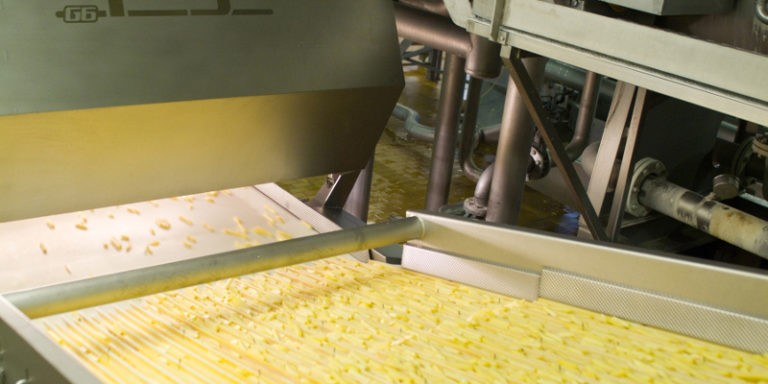Key Technology announces its new potato strips Sort-to-Grade feature for all belt-driven G6 optical sorters: Manta, Optyx, and Tegra. The feature was presented at the NWFPA exhibition in January.
The patented, software-driven intelligence enables sorters to grade by count, accepting or rejecting each defective piece. This allows the processor to define the quality of output, while Sort-to-Grade allows increasing yields by one to three percent as well.
Traditionally, all sorters make accept/reject decisions by comparing the size and colour of each product defect to predetermined criteria. Since final product specifications typically allow a specific amount of minor and moderate defects, the operator usually has to adjust the thresholds of the sorter subjectively, in order to accept and reject products correctly.
This approach to sorting can result in too many minor and moderate defects being rejected, creating a significant yield loss.
“Cruise Control”
The new Sort-to-Grade capability introduced by Key Technology takes into consideration how potentially passing a particular defect, based on its size and colour, will affect the overall final product quality. Sort-to-Grade allows the sorter to control the quality of its output to a defined grade, objectively sorting by count in real-time with 100 percent inspection. It increases yield by reducing unnecessary rejects, while improving the consistency of final product quality and simplifying the operator’s experience.

Sorting foreign material (FM) remains unchanged since every processor is looking to remove 100 percent of FM regardless of count.
“Sort-to-Grade is like ‘cruise control’ on a car. It automates the adjustments needed to maintain a consistent outcome despite the constant fluctuations of input,” said Advanced Inspection Systems Product Manager at Key Technology, Marco Azzaretti, . “Even for a dedicated operator, in some situations it can be nearly impossible to perfectly optimize grade and yield given the volume of dynamic data to be considered”, he explained.
Sorting Fry Length

Simplified-Length-Control is a subset of Sort-to-Grade that focuses on the length of French fries. It automatically preserves the length profile of the final product, regardless of the length of incoming strips, which fluctuate as the sizes of whole potatoes vary. Simplified-Length-Control allows potato strip processors to eliminate mechanical length grading methods and the product damage they can cause.
The Sort-to-Grade software can be installed on any new or in-the-field G6 sorter, including Manta, Optyx, Tegra, and select legacy sorters upgraded with Key’s G6 electro-optical foundation.
As the operator sets the sorter to achieve the desired target grade and size, the software then controls the mass flow of product by making logical piece-by-piece decisions to determine which are passed and which are rejected. If a product piece contains an allowable defect, the sorter adds it to the product flow and allows it to pass. Alternatively, if a piece would result in product out of grade, the piece is rejected. The accept/reject decisions are based on the sorter’s calculated output.
Target grade can be defined by the user as a percentage of tolerable defects in the bag or a percentage removal of incoming defects. The sample size is also user-defined, according to the grading practice used in the processing plant.
With this new sorting capability, there is no need for the operator to adjust thresholds to ensure that the end product meets the processor’s grade standard. By simplifying the operator’s experience, Sort-to-Grade improves the consistency of final product quality and increases yield while reducing training costs.
